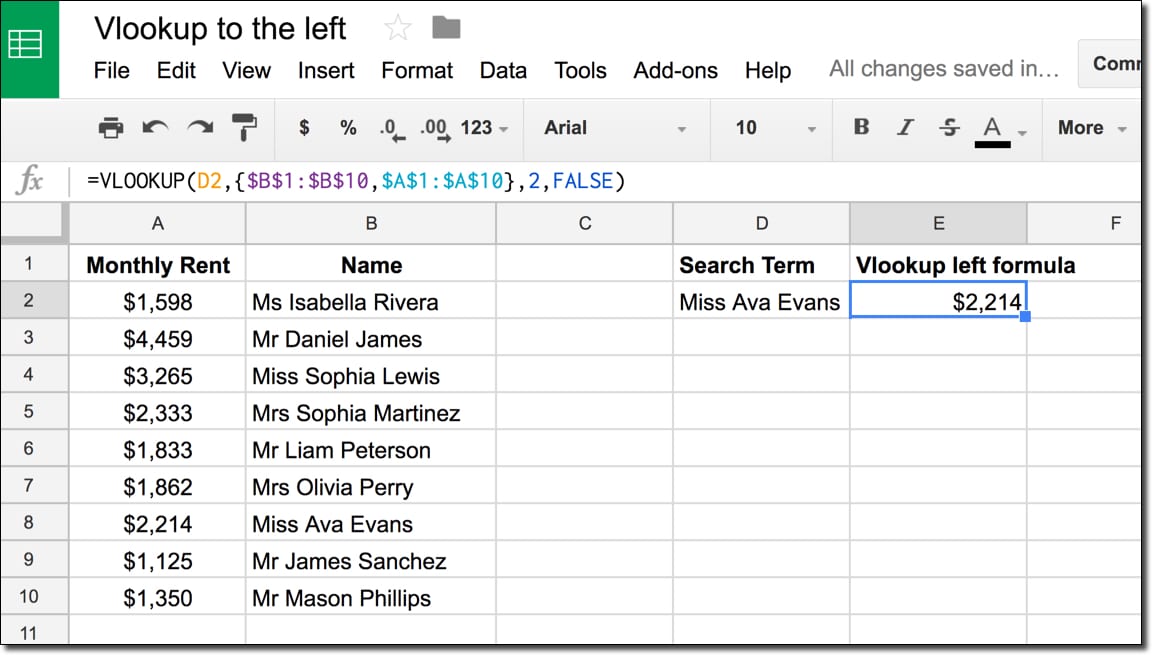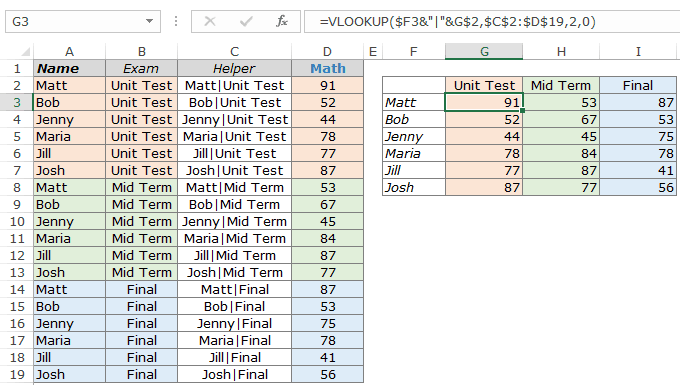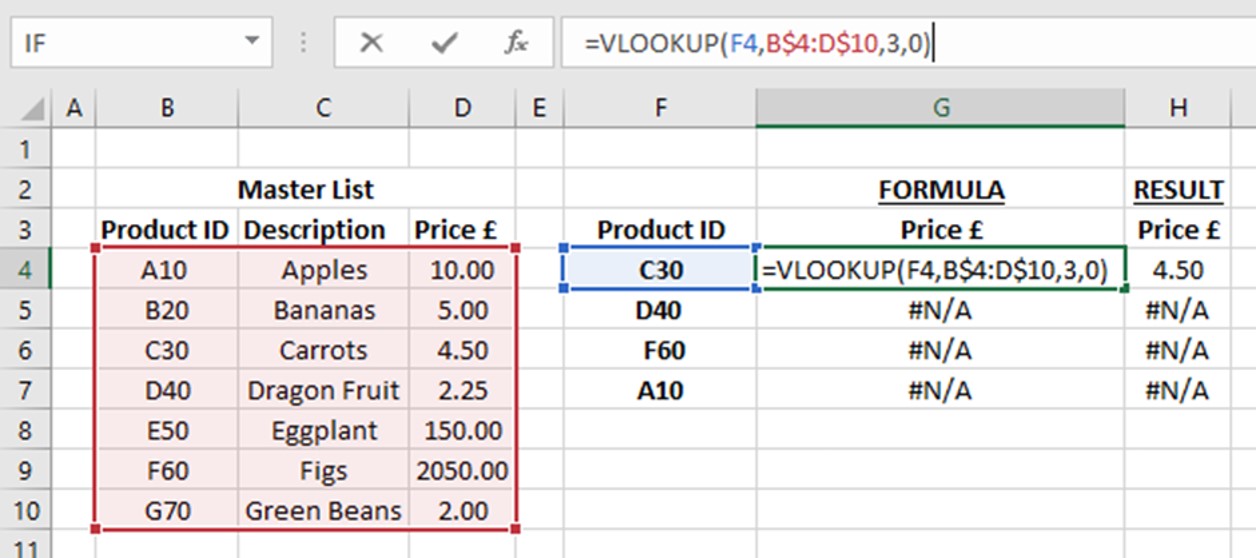All about Vlookup Function
Usage VLOOKUP when you need to discover things in a table or a variety by row. As an example, search for a cost of an automobile component by the part number, or locate a staff member name based on their worker ID. In its simplest type, the VLOOKUP feature states: =VLOOKUP(What you wish to look up, where you wish to seek it, the column number in the range consisting of the worth to return, return an Approximate or Precise match-- suggested as 1/TRUE, or 0/FALSE).
Make use of the VLOOKUP feature to look up a worth in a table. Phrase structure VLOOKUP (lookup_value, table_array, col_index_num, [range_lookup] For example: =VLOOKUP(A 2, A 10: C 20,2, TRUE) =VLOOKUP("Fontana", B 2: E 7,2, FALSE) =VLOOKUP(A 2,'Customer Facts'! A: F,3, FALSE) Argument name Description lookup_value (called for) The value you intend to look up. The value you wish to seek out have to remain in the initial column of the array of cells you specify in the table_array disagreement.
Lookup_value can be a worth or a referral to a cell. table_array (needed) The variety of cells in which the VLOOKUP will certainly search for the lookup_value and also the return value. You can make use of a called range or a table, and also you can utilize names in the disagreement rather of cell referrals.
The cell range also needs to consist of the return worth you wish to find. Learn just how to choose arrays in a worksheet. col_index_num (called for) The column number (beginning with 1 for the left-most column of table_array) which contains the return value. range_lookup (optional) A logical worth that specifies whether you want VLOOKUP to locate an approximate or a specific suit: Approximate suit - 1/TRUE thinks the first column in the table is arranged either numerically or alphabetically, and also will then look for the closest worth.
For instance, =VLOOKUP(90, A 1: B 100,2, REAL). Exact suit - 0/FALSE searches for the precise value in the first column. For example, =VLOOKUP("Smith", A 1: B 100,2, FALSE). There are four items of details that you will require in order to build the VLOOKUP phrase structure: The value you want to search for, also called the lookup value.
Little Known Questions About Excel Vlookup Function.
Keep in mind that the lookup value must constantly be in the initial column in the range for VLOOKUP to function correctly. For instance, if your lookup worth remains in cell C 2 then your range should start with C. The column number in the range which contains the return worth. For instance, if you specify B 2:D 11 as the range, you need to count B as the very first column, C as the second, and more.
If you don't specify anything, the default worth will constantly be REAL or approximate suit. Currently put every one of the above with each other as complies with: =VLOOKUP(lookup value, range containing the lookup value, the column number in the range consisting of the return value, Approximate suit (REAL) or Exact match (FALSE)). Below are a few examples of VLOOKUP: Trouble What went incorrect Incorrect worth returned If range_lookup is REAL or omitted, the very first column needs to be arranged alphabetically or numerically.

Either type the first column, or make use of FALSE for a precise match. #N/ A in cell If range_lookup is REAL, after that if the worth in the lookup_value is smaller sized than the smallest value in the first column of the table_array, you'll obtain the #N/ An error value. If range_lookup is FALSE, the #N/ A mistake worth shows that the precise number isn't located.

#REF! in cell If col_index_num is above the number of columns in table-array, you'll obtain the #REF! error worth. To learn more on fixing #REF! errors in VLOOKUP, see Exactly how to correct a #REF! error. #VALUE! in cell If the table_array is much less than 1, you'll obtain the #VALUE! mistake worth.
#NAME? in cell The #NAME? mistake value generally means that the formula is missing out on quotes. To seek out an individual's name, make sure you make use of quotes around the name in the formula. As an example, get in the name as "Fontana" in =VLOOKUP("Fontana", B 2: E 7,2, FALSE). For additional information, see Exactly how to fix a #NAME! mistake.
Excel Vlookup Example for Beginners
Discover just how to use absolute cell references. Do not save number or day values as message. When searching number or date values, be certain the information in the first column of table_array isn't saved as text values. Or else, VLOOKUP may return an incorrect or unforeseen value. Arrange the very first column Kind the very first column of the table_array before utilizing VLOOKUP when range_lookup holds true.


A concern mark matches any type of single character. An asterisk matches any kind of sequence of characters. If you wish to locate an actual concern mark or asterisk, kind a tilde (~) in front of the personality. For instance, =VLOOKUP("Fontan?", B 2: E 7,2, FALSE) will look for all instances of Fontana with a last letter that could differ.

When looking message worths in the very first column, make certain the information in the initial column does not have leading spaces, trailing areas, irregular use of straight (' or") and also curly (' or ") quotation marks, or nonprinting characters. In these situations, VLOOKUP may return an unanticipated value.
You can always ask an expert in the Excel Customer Voice. Quick Reference Card: VLOOKUP refresher Quick Referral Card: VLOOKUP troubleshooting tips You Tube: VLOOKUP video clips from Excel community specialists Every little thing you require to find out about VLOOKUP How to remedy a #VALUE! error in the VLOOKUP feature Exactly how to fix a #N/ A mistake in the VLOOKUP function Review of solutions in Excel Just how to prevent busted solutions Spot mistakes in solutions Excel functions (alphabetical) Excel functions (by group) VLOOKUP (cost-free preview).
To calculate shipping expense based upon weight, you can use the VLOOKUP function. In the example revealed, the formula in F 8 is: =VLOOKUP(F 7, B 6: C 10,2,1)* F 7 This formula utilizes the weight to find the right "price per kg" after that ... To bypass outcome from VLOOKUP, you can nest VLOOKUP in the IF function.
excel vlookup get value from another sheet vlookup in excel between two columns vlookup in excel rules